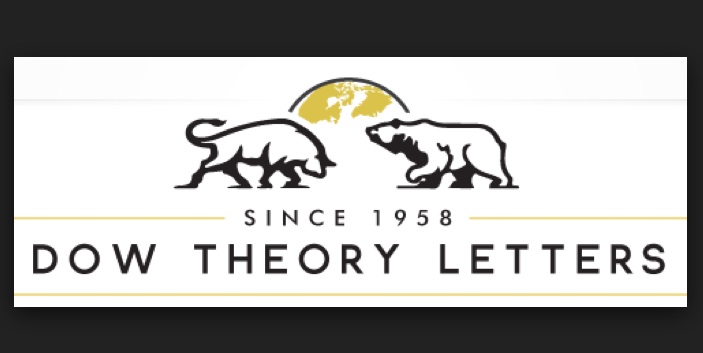
In an investment landscape increasingly dominated by a handful of mega-cap growth stocks, a significant shift is quietly taking place. While the "Magnificent Seven" continue to command headlines and substantial premiums, a growing chorus of financial experts and market indicators suggests that true value may now reside in the often-overlooked corners of the market: small-cap and undervalued stocks. These segments, currently considered "very attractively valued," are presenting compelling opportunities for investors seeking diversification, long-term growth, and a potential hedge against the elevated valuations of market leaders.
This divergence in market sentiment highlights a critical juncture for investors. The concentration of market value in a few dominant companies, while offering impressive returns in recent years, also introduces risks of increased market volatility and potential systemic losses should these giants falter. As such, the re-evaluation of small-cap and value stocks isn't just about finding new opportunities; it's about a broader rebalancing of investment strategies in anticipation of a more diversified and potentially more sustainable market rally.
The Shifting Sands of Valuation: Why Small-Caps and Value Stocks Are Gaining Traction
The current market environment is characterized by a stark contrast in valuations. Mega-cap growth stocks, particularly those in the technology sector, have seen their valuations soar, often driven by optimism around disruptive technologies like AI and strong future earnings potential. However, this relentless ascent has led to elevated price-to-earnings (P/E) ratios, with the S&P 500's forward 12-month P/E ratio reaching an elevated 22.4 as of August 2025, significantly surpassing its historical averages. Many institutional investors are reportedly underweight in these mega-cap tech stocks, signaling caution regarding their high valuations.
Conversely, small-cap and value stocks have experienced a decade of underperformance compared to their large-cap counterparts. This prolonged period of relative stagnation has resulted in these stocks trading at depressed P/E ratios and a substantial discount relative to large-cap stocks. For instance, the Russell 2000 (a small-cap benchmark) trades at a significantly lower P/E ratio than the S&P 500. As of July 2025, the S&P 600 (small-cap) had a forward P/E of 15.8, compared to the S&P 500's 22.48 and the "Magnificent Seven" mega-caps at approximately 28. This valuation gap is near its lowest point in 25 years, presenting a compelling entry point for investors.
Several factors contribute to this attractive valuation. Smaller companies have been disproportionately affected by elevated interest rates and economic uncertainty due to their higher debt relative to earnings. However, with anticipated interest rate stabilization or declines in the latter half of 2025, lower borrowing costs could significantly improve profitability and lead to a re-rating of their valuations. Furthermore, analysts anticipate that earnings growth will broaden beyond the dominant mega-cap tech companies, with small-caps projected to deliver robust 22% earnings per share (EPS) growth in 2025, outstripping the 15% expected from large-caps. This combination of depressed valuations and strong projected earnings growth makes a powerful case for these often-overlooked segments of the market.
The Potential Winners and Losers in a Broadening Market
The shift in market dynamics towards small-cap and value stocks will undoubtedly create a new landscape of winners and losers. Companies that have been overlooked or undervalued due to their smaller market capitalization or perceived lack of "growth" potential are now poised for a resurgence.
Potential Winners:
- Small-Cap Companies with Strong Fundamentals: Companies within the Russell 2000 (NYSEARCA: IWM) and S&P 600 (NYSEARCA: SLY) indices that possess strong balance sheets, consistent revenue streams, and clear growth drivers are likely to be significant beneficiaries. These companies, often more domestically oriented, are also poised to benefit from potential fiscal stimulus, tax reforms, deregulation, and reshoring efforts. As interest rates stabilize or decline, their borrowing costs will decrease, directly impacting their profitability and making them more attractive to investors.
- Value-Oriented Sectors: Cyclical sectors such as industrials, materials, and financials, which tend to be more sensitive to economic cycles and interest rate changes, could see a significant uplift. Many companies in these sectors have been trading at a discount, and a broadening economic recovery coupled with favorable monetary policy could unlock substantial value.
- Companies Targeted for M&A: The attractive valuations of small-cap companies are expected to spur increased merger and acquisition (M&A) activity. Larger companies, seeking growth and diversification, will find these smaller, undervalued firms to be compelling acquisition targets, which can unlock significant value for shareholders of the acquired companies.
Potential Losers (or those facing headwinds):
- Overvalued Mega-Cap Growth Stocks: While not necessarily "losers" in an absolute sense, the mega-cap growth stocks that have driven market performance for years may experience a period of tempered returns. Their current high premiums, driven by market optimism rather than immediate fundamentals, may not be sustainable in the long run. Investors holding or considering these highly valued stocks should temper their expectations for future returns.
- Companies with Weak Fundamentals in the Small-Cap Space: Not all small-cap stocks are created equal. Those with weak balance sheets, inconsistent earnings, or a lack of clear competitive advantages may continue to struggle, even in a more favorable market environment. A selective approach is crucial when investing in small caps, as the segment is inherently more volatile and carries higher risk.
- Passive Funds Heavily Concentrated in Mega-Caps: Index funds and ETFs that are heavily weighted towards the largest market capitalization companies may see their performance lag if the market breadth expands and small-cap and value stocks outperform. This could lead to a re-evaluation of passive investment strategies and a potential shift towards more actively managed funds or factor-based strategies.
Industry Impact and Broader Implications
The potential shift in market leadership from mega-cap growth to small-cap and value stocks has significant implications for the broader industry and economy. This event fits into a broader trend of market cycles, where periods of concentrated leadership eventually give way to more diversified growth. Historically, extended periods of mega-cap dominance have often been followed by periods of small-cap outperformance, as valuations normalize and investors seek out new sources of growth.
The potential ripple effects on competitors and partners are substantial. Smaller, innovative companies that have struggled to compete with the vast resources of mega-caps may find a more level playing field as investor attention and capital flow towards their segment. This could foster greater competition and innovation across various industries. Furthermore, the anticipated increase in M&A activity could lead to industry consolidation in some sectors, while in others, it could provide an exit strategy for successful small businesses and a growth avenue for larger firms.
Regulatory and policy implications are also worth considering. Governments and regulatory bodies often express concerns about market concentration and the potential for anti-competitive practices when a few companies dominate the market. A broadening of market leadership could alleviate some of these concerns and potentially reduce the pressure for increased regulatory scrutiny on the largest tech companies. Moreover, policies aimed at supporting small businesses and fostering domestic growth, such as tax incentives or reduced regulatory burdens, could further accelerate the performance of U.S. small-cap companies.
What Comes Next: Navigating the Shifting Tides
The coming months are likely to be characterized by a continued re-evaluation of investment strategies as the market adapts to these evolving dynamics. In the short term, investors should anticipate increased volatility in both mega-cap and small-cap segments as capital reallocates. However, the long-term possibilities for small-cap and value stocks appear promising.
Strategic pivots or adaptations will be required for many investors. Those heavily invested in mega-cap growth stocks may consider rebalancing their portfolios to include a greater allocation to small-cap and value equities. This could involve gradually reducing exposure to highly valued large-caps and re-deploying capital into more attractively priced opportunities. For new investors, the current environment presents a unique opportunity to build a diversified portfolio with a strong foundation in undervalued assets.
Market opportunities will emerge in specific sectors and companies within the small-cap universe. A selective approach, focusing on companies with strong fundamentals, recurring revenue, and clear growth drivers, will be paramount. Investors may also consider exploring low-cost active funds with skilled managers or factor-based strategies emphasizing quality and valuation, as these can be particularly effective in navigating the complexities of the small-cap space. Challenges may include the inherent higher volatility and lower liquidity of small-cap stocks, requiring a long-term investment horizon and a higher risk tolerance.
Potential scenarios and outcomes include a gradual broadening of the bull market, where small-caps and value stocks begin to consistently outperform large-caps. Another scenario could involve periods of rotation, where different segments of the market take turns leading, requiring investors to remain agile and adaptable. The anticipation of Federal Reserve rate cuts in the latter half of 2025, particularly in September, is seen as a significant potential catalyst for small-cap outperformance, as lower interest rates tend to benefit smaller, more indebted companies.
Conclusion: A New Era for Value Investing
The current market environment signals a potential new era for value investing, moving beyond the concentrated dominance of mega-cap growth stocks. The significant valuation disparity between small-cap and value stocks and their large-cap counterparts presents a compelling opportunity for investors seeking diversification and long-term growth.
Key takeaways from this evolving market dynamic include the importance of a diversified portfolio, the potential for strong returns from currently undervalued assets, and the need for a selective approach when investing in the small-cap space. As the market moves forward, investors should closely watch for further indications of interest rate policy, economic growth trends, and corporate earnings reports, particularly from small and mid-sized companies.
The lasting impact of this shift could be a more balanced and resilient market, less reliant on the performance of a few dominant players. For investors willing to look "beyond the giants," the coming months and years could unlock substantial value and reshape the landscape of their portfolios. The message is clear: while the allure of mega-cap growth remains, the smart money may increasingly be found in the attractively valued, often-overlooked corners of the market.






